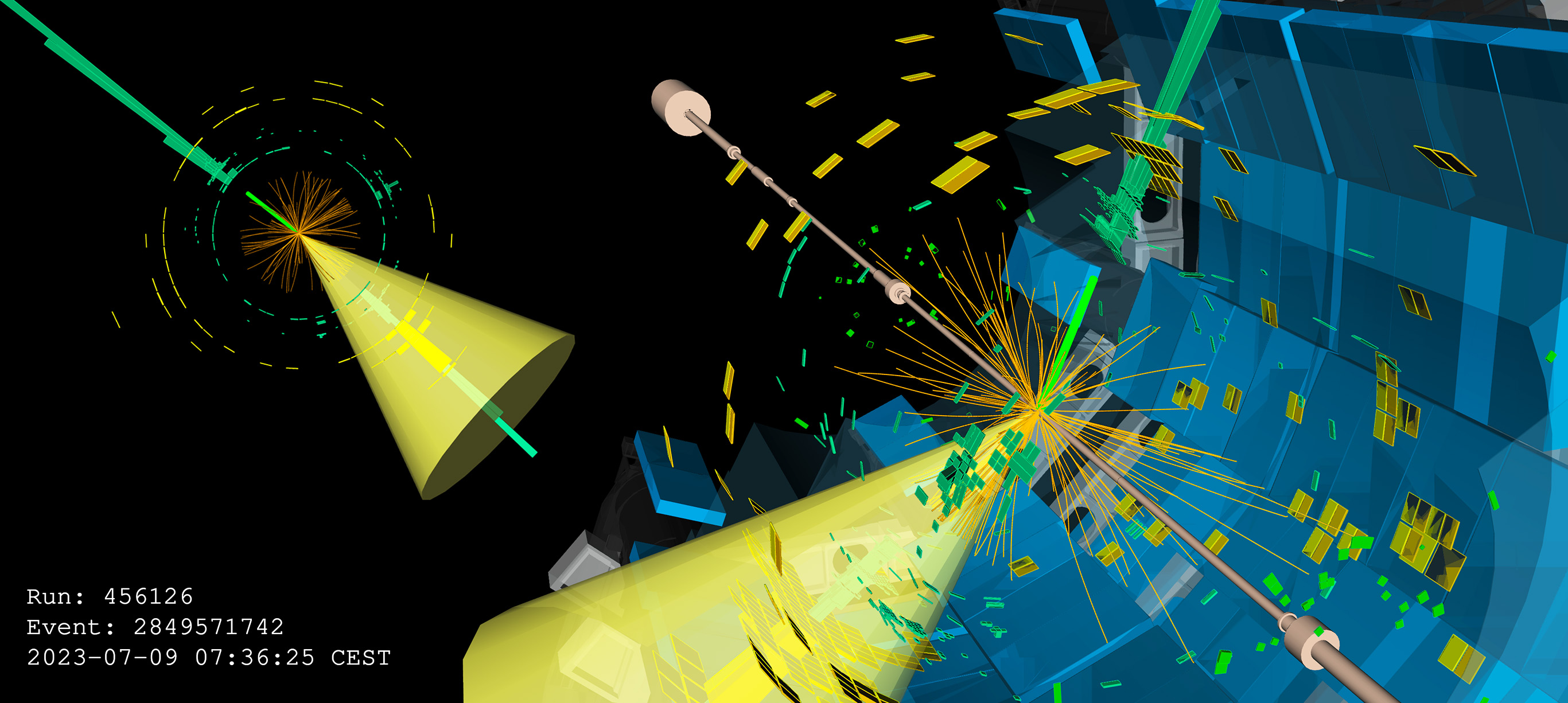Search for new physics in Higgs boson decays with displaced photons
28 March 2022 | By
While the Higgs boson seems to behave in a manner consistent with the Standard Model, uncertainties on current measurements leave the door open for new physics phenomena. In certain supersymmetry theories, a proposed extension of the Standard Model, the Higgs boson could decay to a pair of long-lived supersymmetric particles. Each of these particles would then travel a short distance before decaying to a photon and the stable, lightest supersymmetric particle (LSP), which escapes detection. In fact, based on information from a combination of indirect measurements, up to 21% of Higgs bosons could decay in this way.
Motivated by such a scenario, the ATLAS Collaboration performed a new search for exotic Higgs-boson decays using the full dataset of 13 TeV proton-proton collisions delivered by the LHC between 2015 and 2018. This search exploits the unique properties of the photons produced from long-lived particles, which would leave distinct signatures in the detector. In ATLAS, photons are measured by a liquid argon electromagnetic calorimeter with three layers. Physicists are able to reconstruct a photon’s flight path using the positions of its energy deposits in the first two layers of the calorimeter. This measurement is called photon pointing and creates a straight line that can usually be extrapolated all the way back to the central LHC collision point.
ATLAS' new result provides the very first LHC constraints on exotic Higgs-boson decays to displaced photons – opening the door to new searches for physics beyond the Standard Model.
However, photons from long-lived particle decays instead have flight paths that point towards a production point displaced from the central collision. Additionally, they arrive at the calorimeter at a later time compared to other photons produced at the collision point. ATLAS is particularly sensitive to this time delay, as the calorimeter measures arrival times with a precision of ~0.3 nanoseconds. The striking combination of large displacement in photon pointing and a significant delay in the photon’s arrival time would serve as a smoking gun for new physics.

Occasionally, a photon produced from a Standard Model process will be mis-measured by the calorimeter to have unusually large pointing and/or timing values. Such photons are the background above which real displaced photons from exotic decays may appear. Physicists estimate this background using a control region from the collision dataset and then perform a statistical fit to determine if the observed data is consistent with just the background prediction or if some new signal is required to explain the data. Figure 1 depicts the dramatically different distributions in pointing and timing that are expected for background photons compared to those from simulated displaced decays.
Physicists found that the data is consistent with background processes, with no evidence for the production of displaced photons. As illustrated in Figure 2, the analysis was able to rule out various supersymmetric models that predict the existence of such displaced photons – further narrowing the search for supersymmetry. This result provides the very first LHC constraints on exotic Higgs-boson decays to displaced photons and opens the door to further utilising the unique nature of displaced photons as a probe for physics beyond the Standard Model.
Links
- Search for displaced photons produced in exotic decays of the Higgs boson using 13 TeV proton-proton collisions with the ATLAS detector (ATLAS-CONF-2022-017)
- Moriond QCD talk by Julia Gonski: Highlights from Long-Lived Particle Searches at ATLAS
- Summary of new ATLAS results from 2022 Winter Conferences, ATLAS news
- See also the full lists of ATLAS Conference Notes and ATLAS Physics Papers.





